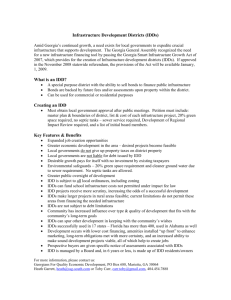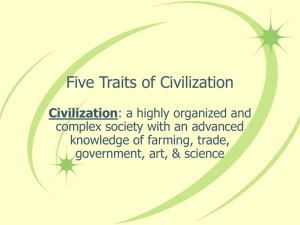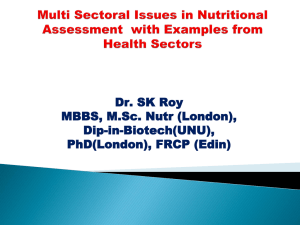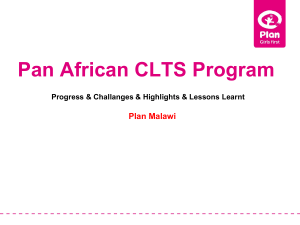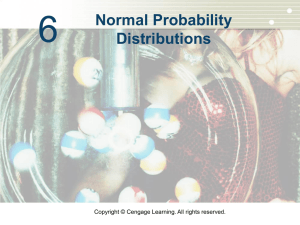presentation_ilse_de_jager
advertisement
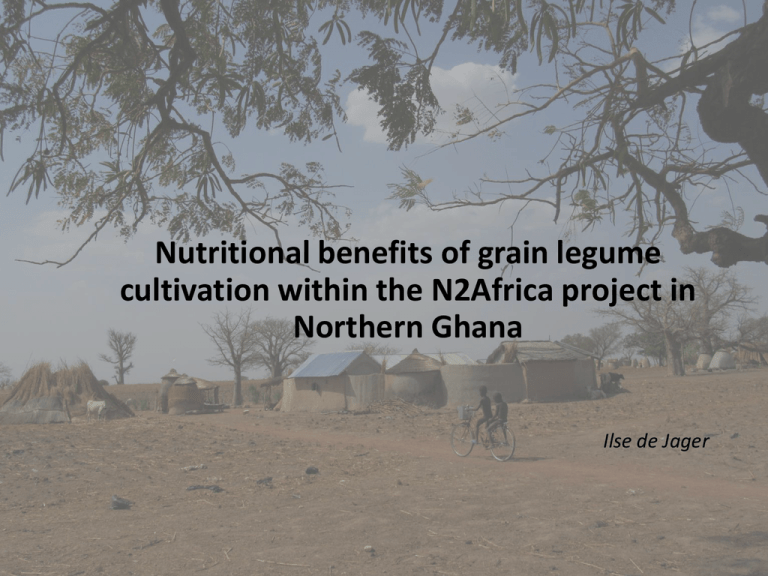
Nutritional benefits of grain legume cultivation within the N2Africa project in Northern Ghana Ilse de Jager N2Africa project Agricultural productivity by BNF • Ghana, Nigeria, DRC, Malawi, Kenya, Mozambique, Rwanda, Zimbabwe New: Uganda, Tanzania, Ethiopia • Groundnut, soybean, cowpea, climbing bean, pigeon pea, common bean • Demonstration plots for smallholder farmers (field day, farmer groups) • Literature study and case studies Objectives • Assessing impact (quantitative): – Nutrient adequacy of the diet – Nutritional status By quasi-experimental, cross-sectional study • Assessing pathways (qualitative): – Via food availability – Via income By focus group discussions Methodology –study area • Ghana – 238.537 km2, lowland country, on average 26 ºC – 28 % of children < 5 are stunted, 9 % are wasted • Districts – Rainfall – Market accessibility Methodology -subjects • Selection of N2Africa villages and farmers – Villages in N2Africa project from 2010 – Farmers who received inputs in 2012 • Selection of non-N2Africa villages and household – Villages supervised by same extension officer – Random walk method Methodology -subjects • Households were included when present: – (N2Africa) farmer – Child of 6 – 59 month old (if >1, randomly selected) – Mother of child (if >1 wife, randomly selected) N2Africa group: N = 129 Non-N2Africa gourp: N = 202 Methodology - IDDS • Individual Dietary Diversity Score (IDDS) – Proxy measure of nutrient adequacy – 24 hour recalls – 14 Food groups Food group Cereals (1) Vitamin A rich vegetables and tubers (>60 RAE) (2) White roots and tubers (3) Dark green leafy vegetables (>60 RAE) (4) Other vegetables (5) Vitamin A rich fruits (>60 RAE) (6) Other fruits (7) Organ meat (8) Flesh meat (9) Eggs (10) Fish (11) Legumes, nuts and seeds (12) Milk and milk products (13) Oil and fats (14) Yes/No Yes No No Yes Yes No Yes No No No Yes Yes No Yes Methodology - IDDS • Role play • • • • • • Open questions Not suggestive ALL ingredients (mixed meals -> ask!) Probe for snacks, fruits and fluids Bought items (check ingredients on market) Analysing: food composition table for categorisation into food groups (vitamin A rich vegetables and fruits) Methodology - anthropometry • Measuring nutritional status Height Weight -Children <2: recumbent length -remove shoes, jackets -Children >2: standing height -child <2: with mother -Analysis: 0.7 cm (length child>2) -child >2: stand still Methodology -measurements • Analysing nutritional status – Use WHO reference population 2006 – SPSS syntax (anthro+), epi info (low key, free) Stunted <-2 Z-scores height-for-age Severe stunted <-3 Z-scores height-for-age Wasted <-2 Z-scores weight-for-height Severe wasted <-3 Z-scores weight-for-height Underweight <-2 Z-scores weight-for-age Severe Underweight <-3 Z-scores weight-for-age Results Individual dietary diversity N2Africa subjects and non-N2Africa subjects N2Africa Non-N2Africa Unit N = 129 N = 202 Mean (SD) 5.5 (1.9) 5.1 (1.8)* children <2 years Mean (SD) 4.2 4.1 children 2 – 5 years Mean (SD) 6.1 (1.2) 5.6 (1.3)* % (N) 62.5 (25) 56.0 (14) Outcome IDDS, out of 14 food groups Minimum dietary diversity (7 groups, IDDS>=4, child< 2) *P<0.05 (Mann-Whitney U test); • Children > 2 years of N2Africa participants have a more nutrient adequate diet • Children < 2 years do not differ Results Consumption of food groups • N2Africa subjects consumed more: ‘White roots and tubers’, ‘Other fruits’, ‘Legumes, nuts & seeds’ and ‘Oils & fats’ Results Nutritional status indicators N2Africa subjects and non-N2Africa subjects Overall Children <2 years Non-N2Africa N2Africa Non-N2Africa N2Africa villages villages villages villages (n=202) (n=129) (n=76) (n=40) % (N) % (N) % (N) % (N) Stunting (length/height-for-age) 29.2 (59) 35.7 (46) 25.0 (19) 27.5 (11) Wasting (weight-for-age) 10.9 (22) 6.2 (8) 23.7 (18) 17.5 (7) Underweight (weight-for-height) 23.3 (47) 24.0 (31) 31.6 (24) 27.5 (11) Characteristic • Long-term effect • Other causes of malnutrition Conclusions • Legume intake higher in N2Africa subjects • N2Africa seems to increase the nutrient adequacy of the diet of children > 2 years, but not < 2 years • No impact on nutritional status • Involving nutrition from the beginning... -Target households with children under 5, adolescent girls - Varieties of legumes high in iron, low in phytate(measure) - Collaborate with other projects (health, WASH) - Nutritional value addition within value chain Questions? n2africa.tv/video/77717212

